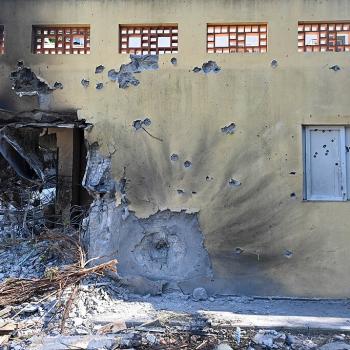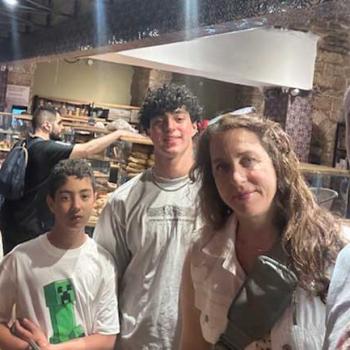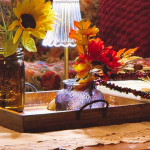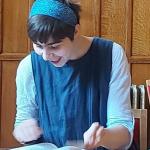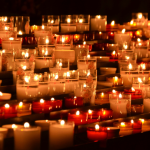Sukkot in Jerusalem is really a sight to be seen. There are sukkahs on top of sukkahs. Every restaurant has one on the street (why? because men especially must eat all their food in a sukkah, if that is your minhag [tradition] and if a restaurant wants to be open during sukkot, they have to have a sukkah for these guys) and walking home at night, you see these beautiful booths lit up on every street.
As soon as Yom Kippur is over, it is tradition to start building your sukkah. Some people just do a bit and finish the next day but some families get on it that night. There are two main parts to this holiday –
“On the first day you shall take the product of hadar trees, branches of palm trees, boughs of leafy trees, and willows of the brook” (Lev. 23:40), and
“You shall live in booths seven days; all citizens in Israel shall live in booths, in order that future generations may know that I made the Israelite people live in booths when I brought them out of the land of Egypt” (Lev. 23:42-43).
The first part concerns the Lulav and Etrog. The lulav, as a bunch, is made up of three species – Willow, Myrtle, and Palm. The word lulav refers to the closed palm frond that is the spine or the middle of the bundle called a lulav. The myrtle is called hadass. It has small oval leaves and represents the eyes. Then comes the willow which is called arvah and with it’s long leaves, represents the mouth. The last part of this package is the etrog, a citron fruit whose shape resembles the heart. There is another midrash that gives us different symbolism.
- The lulav has taste but no smell, symbolizing those who study Torah but do not possess good deeds.
- The hadass has a good smell but no taste, symbolizing those who possess good deeds but do not study Torah.
- The aravah has neither taste nor smell, symbolizing those who lack both Torah and good deeds.
- The etrog has both a good taste and a good smell, symbolizing those who have both Torah and good deeds. (thanks to Wikipedia for that)
Here is the lulav that my father bound for the family this year at home in Colorado –
I went on a hunt on erev Sukkot (i.e. our holidays begin at night so this was during the day when sukkot was beginning that night) for some cool sukkot pictures in Jerusalem. We went to the ultra orthodox areas. While we couldn’t go into the main shouk (market) I did get some neat shots…
Also, we build the sukkah to eat, play, and sleep in for the 7 days of sukkot. There are some rules surrounding this dwelling. (For a fun but halachicly [legally] sound version of these rules, head over to my blog – The Laws of Sukkah According to Dr. Seuss.)
Some groups choose not to decorate their sukkahs but others decorate them with fruit and vegetables and pictures and lights, etc. I heard one person exclaim, “It’s like a Jewish Christmas tree!” Not quite but fun all the same.
Here are some sukkah pictures that I collected on my walk –
Originally posted at Talia, She Wrote



